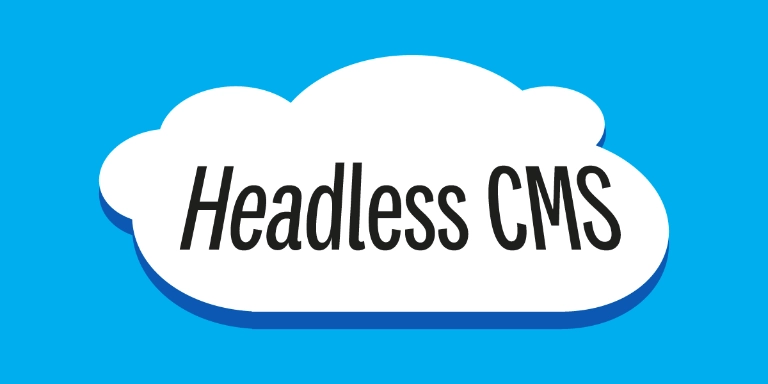Flying High With A Headless Cloud CMS
If someone told you your head was in the clouds a few years ago, you might have taken it as an insult. Maybe they were trying to say that you weren’t paying attention. Nowadays, if your head isn’t in the clouds, they might think the same thing.
The cloud has become the centerpiece of modern digital experiences. In fact, the cloud is so pivotal that Gartner’s VP Analyst Milind Govekar stated that “there is no business strategy without a cloud strategy.” Gartner also expects that “85% of organizations will embrace a cloud-first principle by 2025” as they seek to optimize their digital initiatives.
For these companies, it might be helpful to consider cloud-native platforms that make the best use of all capabilities of the cloud. If you are among them, it might be worth taking a closer look at a headless cloud CMS to handle your content management needs and to publish content to the channels your customers want.
What Is a Headless Cloud CMS?
A headless cloud CMS is a headless Content Management System that is hosted in the cloud instead of on-premises. Before tackling the definition of a headless cloud CMS, it’s easiest to define a headless CMS and a cloud CMS.
A headless CMS decouples the front-end content delivery layer from the backend content management system. Instead, the front end and backend communicate via APIs. As a result, content can easily be delivered to multiple touchpoints and devices such as a website, a mobile app, digital kiosks, and smartwatches.
A cloud CMS is hosted in the cloud and can typically be accessed via a browser without downloading software onto your computer. All tasks relating to content management can be handled in the cloud software, including content creation, editing, and delivery.
By combining the benefits of a headless architecture and a cloud CMS, companies can enjoy several advantages. Opting for a cloud-first headless CMS saves organizations the effort of hosting their CMS on-premises. Given the increasing importance of a cloud-first strategy now and in the future, pursuing a headless approach in the cloud may be the ideal solution for your business.
Benefits of A Headless Cloud CMS
A headless cloud CMS combines the benefits of a headless CMS with those of a cloud CMS. Together they enable your business to deliver and re-use content on multiple channels easily, provide greater availability, and lower your efforts and costs. These are some of the benefits in more detail:
Magnolia Cloud Feature Catalog
Download the complete overview of Magnolia Cloud features.
Omnichannel Content Delivery
A cloud-first headless CMS serves as a central content hub. It makes content available to multiple channels simultaneously via APIs, enabling you to create consistent omnichannel experiences for your customers. And even as new IoT devices are invented, you won’t have to change your CMS to deliver content to them.
Easier Content Repurposing
With a headless cloud CMS, content duplication is a problem of the past. Instead of creating multiple versions of content in different places, you create content only once and store it centrally. This allows you to repurpose content more efficiently, saving your teams time and resources.
Flexible Architecture
An essential aspect of the architecture of a cloud-first headless CMS is how it makes services available to other systems in the tech stack using APIs. The headless architecture enables you to integrate with backend systems and connect to new front ends built on emerging technologies.
Better Scalability
Organizations shouldn’t be limited by the compute or data storage capacity of their data center or CMS vendor. A modern CMS hosted in the cloud can scale better than a legacy platform on-premises, providing more flexibility for business growth.
High Availability
When you chose an enterprise CMS vendor to host your headless CMS in the cloud, your data gets stored across data centers in multiple geographical zones, increasing the availability of your CMS.
Lower Startup Costs
The costs of setting up a cloud-first headless CMS are lower than those of an on-premises platform. You don’t have to concern yourself with purchasing hardware such as servers and networking equipment required for an on-premises deployment. Instead, you typically pay a subscription to use the cloud CMS service.
Magnolia Headless CMS: Helping You Fly High Among the Clouds
Many companies are planning to select a cloud-based CMS for their next DX platform. Those that want to take full advantage of the cloud and a headless architecture should consider a headless cloud CMS which allows them to embrace a cloud-first strategy and an API-first approach.
With Magnolia, front-end developers get all the flexibility of the headless approach allowing them to use any front-end framework to create modern customer experiences. And backend developers will appreciate how easy it is to integrate Magnolia into the existing system landscape.
The Magnolia headless CMS also provides authoring features such as visual editing, preview, and easy scheduling, making it easy to use for editors and marketers.
And of course, Magnolia is available in the cloud. Our PaaS even comes with a Git repository, pipeline blueprints, enterprise-grade security, and monitoring to make the (work) lives of development teams and marketing teams easier.
Still unsure if you’re ready to choose a headless cloud CMS to fly high? Take a look at our Cloud Feature Catalog to learn more about the benefits you can expect with a cloud-based headless CMS.
